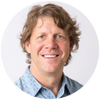COVID strains on supply chain will take years to unravel
Prices are going up because of everything from employment to shipping and consumer behavior.

There is no light to be seen yet at the end of the tunnel of COVID-caused supply-chain issues.
Expect current conditions to continue well into 2022, according to an Oct. 26 session at SupplySide West in Las Vegas on global supply-chain management factors affecting the U.S. supply of ingredients.
And there’s a litany of reasons why this disruption is expected to continue.
“Transportations costs are increasing,” said Wilson Lau, vice president of sales at Nuherbs, a supplier of wholesale botanicals out of China. “There’s difficulty getting shipping containers.”
Containers that can be found are now going at huge premiums—what might have cost $2,000 are now going for $20,000. That will raise the price of whatever is inside those shipping containers.
The inflation being experienced is also all about COVID—on the one hand, people are not working because of fears of catching the disease, and on the other, a spike in purchases from American consumers has led to a delays and blockages across the world.
“Imports into the U.S. rose 25 percent this past year,” said Michael McGuffin, president of the American Herbal Products Association. “There are 103 container ships waiting to get to Long Beach and Los Angeles. A year ago, it was one. One.”
Once goods actually do make it into U.S. ports, there are additional challenges with a lack of employees both on the docks at ports as well as with driving trucks to bring the goods to market. Shortages of workers, as well as equipment, and a lack of coordination across the transportation industry, have contributed. The Port of Long Beach, at the bequest of the Biden administration, has increased its operating hours to go 24 hours a day from Monday through Thursday, though the port of Los Angeles did not follow suit. Even so, neither warehouse workers nor truckers operate throughout the night, which cause another pain point in the process.
Ports in Australia are also reporting similar delays.
To add insult to injury, on top of COVID-related issues, it’s been a year of tumultuous weather in China.
Lau said the outsized rain deluge in China this year affected a million hectares of crops. One hectare is about the size of two-and-a-half football fields. A million hectares is roughly the size of Kentucky or Indiana.
“Schisandra prices have gone up 30 to 40 percent just from the weather,” he said. “There was frost before the harvest. Forsythia prices doubled; that affects TCM formulas. Astragalus is flat, so that’s some good news going on.”
These supply-chain strains have compelled some brands to consider shifting supply chains, in particular to try to source raw materials from the U.S. instead of from China, where an estimated three-quarters of all supplement ingredients are derived. But that’s easier said than done. There’s a reason China is the supplier of choice.
“Raw materials are at a certain price point, and it’s already a competitive landscape,” said Ajay Patel, founder and CEO of ingredient supplier Verdure Sciences. “Anything you wish you grow in the U.S. will come at a price—and that’s just the raw botanicals. Then there’s extraction and processes to get to the next level. That’s a whole different ballgame.”
The question becomes whether it is worth it to try to grow botanicals in the U.S.
Chinese-produced herbs may cost less, but what happens when you can’t get them in time—or at all?
“We should expect no simple solutions to any of these,” Patel said. “These things take years.”
About the Author(s)
You May Also Like






.png?width=800&auto=webp&quality=80&disable=upscale)